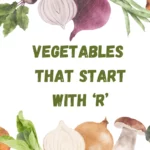A Beginner’s Guide to the Flavorful World of Chinese Restaurant Tea.
Introduction: That First Sip
If you’ve ever dined at a Chinese restaurant, you’ve likely noticed something familiar yet intriguing — a warm cup of tea served the moment you sit down. It’s soothing, aromatic, and somehow sets the perfect tone for the meal. But what tea do Chinese restaurants use?
The answer is surprisingly rich in tradition. The tea used in Chinese restaurants is often Jasmine, Oolong, Pu-erh, or Chinese green tea, depending on the cuisine style and region. These teas are deeply rooted in Chinese culture, and they’re chosen not just for taste, but for how well they complement food, enhance digestion, and embody the essence of hospitality.

Let’s dive into this flavorful tradition and discover what makes Chinese restaurant tea so iconic.
The Tradition Behind Chinese Restaurant Tea
Serving tea in Chinese restaurants is more than a formality — it’s a nod to centuries of tradition. In Chinese culture, tea represents respect, warmth, and well-being. That’s why you’re offered tea even before placing an order.
Tea also acts as a palate cleanser. Before rich or oily dishes hit your table, tea helps prep your taste buds and settle your stomach. This makes it a practical, as well as cultural, part of the dining experience.
What Tea Do Chinese Restaurants Use?
Let’s answer the big question directly. Most Chinese restaurants serve one of the following teas:
-
Jasmine tea
-
Oolong tea
-
Pu-erh tea
-
Chinese green tea
Each of these options offers its own flavor profile and purpose. Some restaurants use one kind exclusively, while others rotate based on availability or menu pairing.
Jasmine Tea in Chinese Restaurants
This is easily the most common type of tea served in Chinese eateries. Jasmine tea is made by infusing green tea leaves with jasmine blossoms, creating a light, fragrant brew.
Why It’s Served:
-
Pairs well with stir-fried and steamed dishes.
-
Refreshes the mouth with floral notes.
-
Appeals to both seasoned tea drinkers and beginners.
Whether it’s served loose-leaf or in a tea bag, jasmine tea in Chinese restaurants is a universal favorite.
Oolong Tea in Chinese Restaurants
Not as light as green tea but not as strong as black, oolong strikes the perfect balance. It’s semi-fermented, which gives it depth and complexity.
What Makes Oolong Special:
-
Great with fried or fatty foods.
-
Aids digestion — ideal for heavy meals.
-
Rich and slightly toasty flavor.
You’ll often find oolong tea in Chinese restaurants that specialize in Sichuan or Hunan cuisine because it balances out spicy flavors beautifully.
Pu-erh Tea: The Aged Treasure
Fermented and aged, pu-erh tea is darker, stronger, and bolder than the other types. It’s especially popular in Southern China and authentic establishments that focus on traditional presentation.
Why It’s Used:
-
Helps break down greasy foods.
-
Offers deep, earthy tones.
-
Often consumed after the meal.
In restaurants with a strong connection to Yunnan culture, pu-erh tea is the preferred option.
Chinese Green Tea: Clean and Classic
Not to be confused with Japanese green tea, Chinese green tea has a subtler taste and more herbaceous aroma. It’s usually served without any flavoring and is known for its health benefits.
Key Features:
-
Low caffeine.
-
Natural and clean flavor.
-
Pairs well with mild dishes like tofu, steamed fish, or greens.
This option is common in minimalist or modern Chinese eateries focusing on wellness.
Why Chinese Restaurant Tea Tastes Better
A common curiosity is: why does Chinese restaurant tea taste better than homemade tea? Here are a few reasons:
-
Loose-leaf quality: Restaurants often use high-quality, loose-leaf teas, not dusty tea bags.
-
Perfect water temperature: The water is usually filtered and heated to the exact temperature required for each type of tea.
-
Right steeping time: Oversteeping leads to bitterness, and Chinese chefs know that well.
-
Clean teaware: The teapots and cups are cleaned thoroughly, enhancing flavor purity.
This simple combination results in that clean, smooth, aromatic taste.
Chinese Tea Served With Meals: Pairing Matters
Did you know that certain teas work better with specific foods? Just like wine pairing, tea pairing enhances your culinary experience.
| Tea Type | Best Paired With |
|---|---|
| Jasmine | Dumplings, rice dishes, chicken |
| Oolong | Duck, noodles, fried items |
| Pu-erh | Dim sum, spicy sauces |
| Green Tea | Fish, steamed vegetables |
This subtle pairing plays a big part in your dining satisfaction without you even realizing it.
The Most Popular Chinese Tea Types
Let’s break down the popular Chinese teas you may encounter in restaurants:
| Tea Name | Flavor Notes | Health Perks |
|---|---|---|
| Jasmine Tea | Floral, Light | Calming, digestive support |
| Oolong Tea | Earthy, Nutty | Fat-burning, heart-healthy |
| Pu-erh Tea | Woody, Deep | Gut health, cholesterol control |
| Chinese Green | Grassy, Clean | Antioxidants, detoxification |
Each of these teas plays a role in both flavor and function.
Tea Brands Used in Chinese Restaurants
Chinese restaurants don’t typically use commercial Western tea bags. They prefer reputable Asian tea brands that are known for quality and authenticity. Some popular names include:
-
Ten Ren Tea
-
Sea Dyke Brand (especially for oolong and pu-erh)
-
Foojoy Tea
-
Prince of Peace
-
Triple Leaf Tea.
These brands are often imported directly from China or Taiwan and provide consistent quality across restaurant chains.
How to Brew Chinese Restaurant Tea at Home ☕
Want to bring that restaurant magic into your kitchen? Here’s how:
Step-by-Step:
-
Use loose-leaf tea (not bags).
-
Heat water to the right temperature: ~80°C for green, ~90°C for oolong.
-
Use a gaiwan or porcelain teapot.
-
Steep for 1-2 minutes only.
-
Drink plain — skip sugar, milk, or lemon.
With the right tools and technique, you’ll have your own cup of authentic Chinese restaurant tea in no time.
Conclusion: More Than Just a Drink
The tea served in Chinese restaurants is not just a drink — it’s a cultural experience. Whether it’s jasmine, oolong, pu-erh, or green tea, each type is carefully chosen to support digestion, enhance flavor, and reflect the warmth of Chinese hospitality.
So next time you sit down at your favorite Chinese restaurant, you’ll know exactly what’s in your cup — and why it matters.
FAQs: Frequently Asked Questions
What is the most common tea used in Chinese restaurants?
Jasmine tea is the most commonly served, especially in Cantonese-style restaurants.
Is Chinese restaurant tea good for digestion?
Yes! Oolong and pu-erh teas are especially known for aiding digestion.
Can I buy the same tea served in Chinese restaurants?
Absolutely. Look for brands like Ten Ren, Sea Dyke, or Prince of Peace.
Why is the tea always unsweetened?
Chinese tea is meant to cleanse your palate and support your body naturally — no sugar needed.
Are these teas caffeinated?
Most are mildly caffeinated but won’t keep you up at night.
What’s the strong, dark tea I had at a Chinese place?
That was likely pu-erh — a fermented, aged tea known for its rich, earthy flavor.
Is it okay to ask for more tea at a restaurant?
Definitely! It’s often served freely and can be refilled upon request.
What’s the healthiest tea served in Chinese restaurants?
Green tea is low in caffeine and packed with antioxidants, making it a top pick for wellness.
Join 25,000+ smart readers—don’t miss out!








